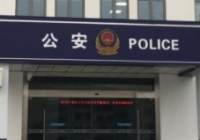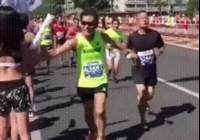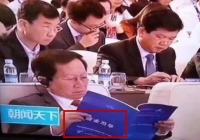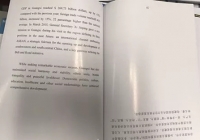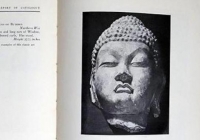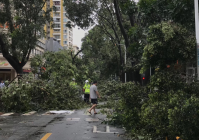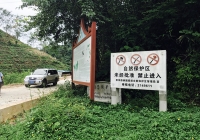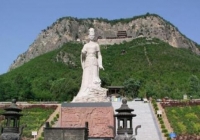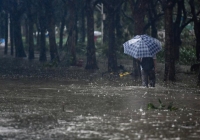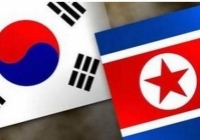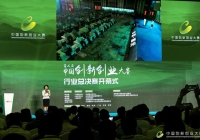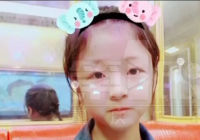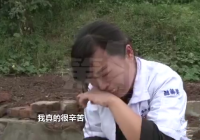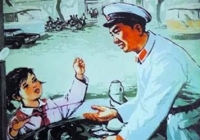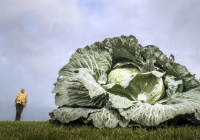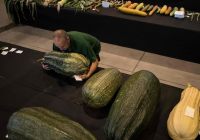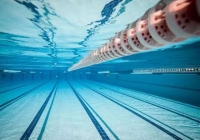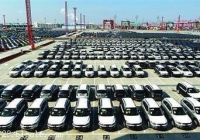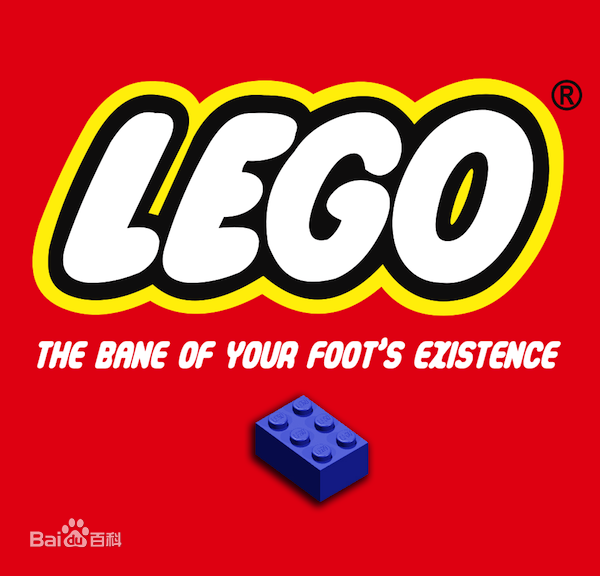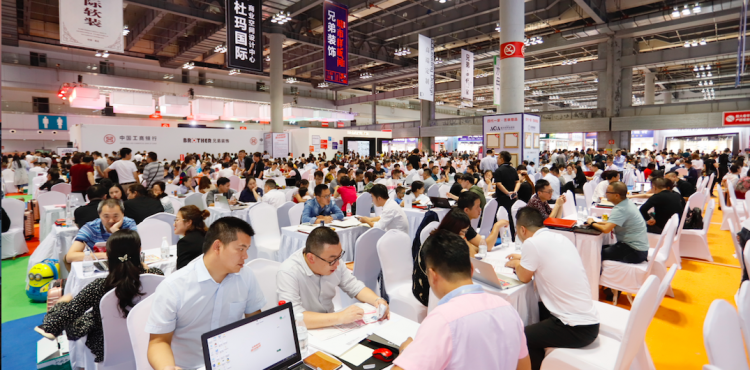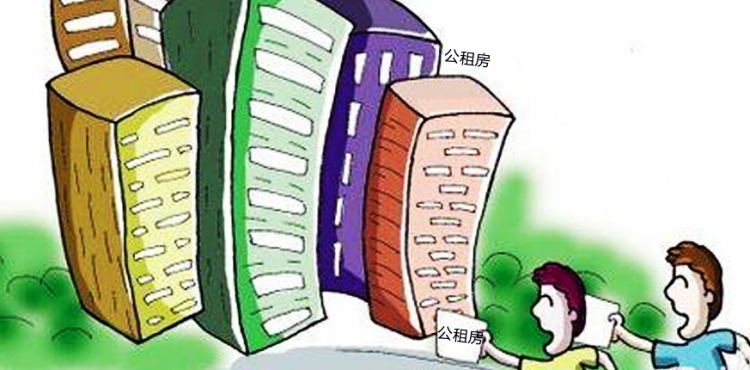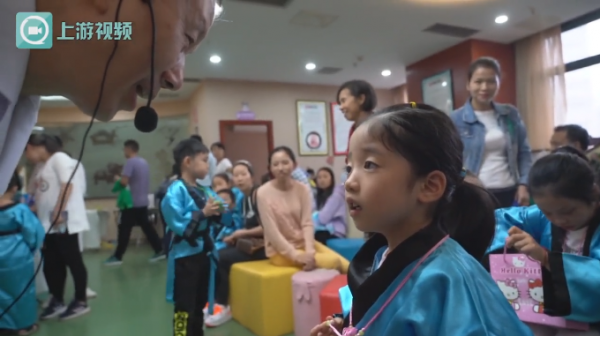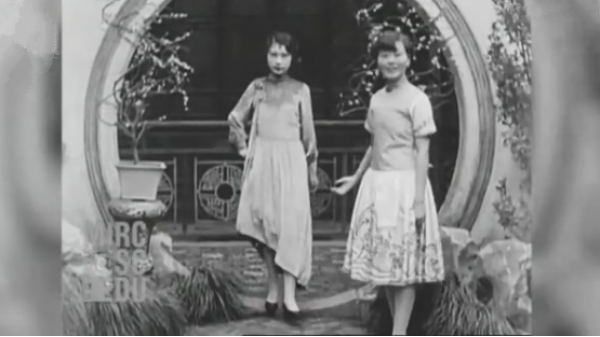

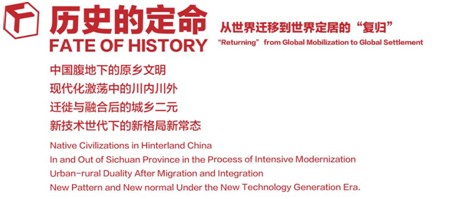


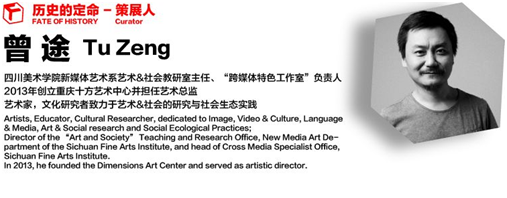
历史、文化与地缘难以分开叙事,成渝(巴蜀)作为一种地缘共同体,其作为中国之中国的历史身份从未动摇,过往每每中原逐鹿法统崩坏,天子往往南涉幸蜀求安避祸,巴蜀地势如盆,西接世界屋脊丰沛水脉,盆地为群山环绕,水土丰茂、生养众多,却相对封闭,易守难攻,战略优势明显,这种地缘格局使巴蜀自成一隅,当得起“天府之国”的美名。当然天府之丰茂对华夏中原的历史文脉影响不足,也因其地缘之阻塞,难以形成与中原的大规模社群互动。可说从巴蜀一地来看,每见川外人口的大规模迁徙入川,必是川外历大浩劫或大盛世,才会有克服万难的相遇。巴蜀正如中华之“腹地”,天赋于之的地缘独立性得以使农耕原住民特有的原乡文明持久延续。虽然川内的演迁也会与时俱进,但地缘阻隔使它的演迁总是与川外应对开放演变的大势有着时空的差时性,加之它的空间、社群体量事实即将中国文明体量拉伸为更大的时空存在体。每次中华大变大迁,稍迟才会波及巴蜀,但正是由于巴蜀这个巨大差时性腹地的存在,在中国文明在遭遇危机冲击时,也在事实上扮演着时空的缓冲带,为文明之冲突与交融保有一份反思的从容。
这种间或一次的中华入川,在古代或可称之为“避祸”,在近现代与西方现代化文明的冲撞与自己现代化困境的危机时刻,巴蜀一地多次面临现代化激荡的入川大迁徙,此时的川内与川外由于现代化带来的社会激变产生了巨大差时性,川外是指向城市化、工业化、现代化的新世界,川内影响有限,依然整体表现为原乡的乡土秩序。西方现代化的海啸以欧美为中心往全球迅猛扩张,以惨烈的两次世界大战催生出现代的全球化世界,重庆作为中华民国二战时的陪都,也从腹地江城突变为“现代中国之心脏”。
不同于如过往中国历史中的“双京”“多都”或是“行都”“副都”,作为陪都的重庆接纳了晚清以降大半个中国近现代化的成就与成就它的现代精英集体,这是一次国家尺度的大时空折叠,是一次传统与现代的超链接,大历史视角上,更是现代城市化的前线与传统乡土腹地的第一次全方位——复归。从此以后的现代历史,每一次对巴蜀为代表的乡土现场的复归,逐渐演变为中国现代化进程的一种轮回模式,复归是迁移与融合的社群共生,时代现场在现代化割裂的城乡二极往复轮转,次第博弈进化,渐渐形为一种中国现代化的危机解决模式。每一次的复归总是意味着城市的危机与乡土的更新,虽然后者一直是被动的,但在那里存续着中国千年原乡的丹田之气。
现代化开启后的重庆市一直被国家另眼相看,这诚然取决于陪都时期突飞猛进建构的整体高度,更也源自于巴蜀一地本身的战略地缘优势,即便在中日的现代化战争中,前国民政府依然照旧入川,便可见一斑。全球现代化秩序的传播是由战争和冲突开启的,世界热战之后,接下来的冷战世界中,60年代因应于当时尖锐的国际政治局势,中东部一二线工业的分散和西迁和三线建设使工业业态以国防战略式整体嵌入腹地,亦是因由于地理崎岖的战争防御优势,也由此巴蜀腹地广域地增添了系统工业化的现代印记,同时伴随迁入的数百万高教育的现代非农人口,以及后续上千万的知识青年上山下乡,更是持续深刻地改变了乡土中国的社群构成,这可以视为第二次国家危机中的大规模现代性“复归”。
80年代以来国家进入现代化高速发展建设期,城市大量生长,城市生态成为主要的发展现场,重庆在前两次复归的基础上,持续扮演着巴蜀一地,乃至中西部地区的现代化枢纽。更大规模的“复归”再次发生在重庆成为直辖市的大背景下,重庆再次因其地缘即历史现实,成为连接东西部时空与城乡二元的桥梁,并与西部大开发、三峡大坝一起烙印下新世纪之前的第三次复归。
第四次复归则是人类命运共同体和一带一路倡议下的最新的大规模复归,在上一轮全球政治经济形势大变局的背景下,中国社会经济发展进入大历史尺度的新常态,中国的现代化历程开始思考属于自己的中国梦,开启了复兴千年中华的文化自信、制度自信、道路自信的新时代。这不但意味着产业业态的升级、转型,也意味着经济社会发展模式的历史转型,更加意味着中国社会作为共时性整体的和谐共生,尤其是曾经由外部世界导致的被动现代化所撕裂的城乡二元社群,将在新世代的国民性重建中完成中国现代性的终极复归。
巴蜀独特的历史身份因其地缘而得,成渝两大枢纽之历史身份亦是因地缘而得,成渝二城各于西北、东南首尾守顾着巴渝的水脉民生,成就中华腹地在今日中华文化大复归的历史身份,亦是历史之定命。
现代化生发基于技术进步与资本扩张诚然使人类陷于强流动、高效率、大生产的破坏式创新发展模式,但客观上也迅速将全球作为一个整体的理念传递到了全球。现代性的再发展不可能再入它初生时一样往有时空落差的地区肆意扩张,它的发展受限于地球已知的尺度,其强流动、高效率的特征将必须转向新维度的成长,才有可能接续之前蓄积的能量。尤其是信息技术的广泛、深刻的变革从根源上大大增强了世界的共时性,现代性初期的差时性横向流动与往复将转向共时性的生长与持续。前现代世界差时发展导致的巨大时空落差,也促使了前现代的世界大迁移,而共时性革命性地增强了世界大定居的趋势发展。全球化世代的前现代大迁移大流动,因其时空差时性的消失将渐渐回归于全球尺度的共时性共生,这是世界整体重新进入定居模式的新世代。
如果说西方现代化发展的差时性破坏了中古地球各原住民社群的历史平衡,将全球卷入现代性的洗礼和重组中,重塑为我们今天面对的现代世界,那么当今日世界进入共时发展的过程中,新的秩序就不在可能是无缘无故的剧烈激荡,而是持续交互的和平博弈甚至共赢共生。可观察的事实上,世界的现代化发展趋势因为现代化中国的崛起,引发着深刻的变化。这个千年以定居为中心的古老文明,正在将它的古老智慧与现代精神融合为一种适用于全球时代的中国智慧,这是整个人类文明历史给予中国的巨大命题,它的使命是给予这个曾经激荡的地球一种全球共生的和平方案。
不论人类演迁出何种生产生活的现场,只要是人们还在世界之中,知觉着自我、行动于社群,他们的思行就是文化沉积的第一现场,而其中亦是艺术得以延续其意义的母体腹地。
今日中华腹地之现场正是大历史之现场,一如既往地呈现着历史之定命。
千里之行,始于足下,所谓历史,就在脚下。
- 策展人 曾途
History, culture and geography are difficult to be narrated separately. As neighbors of each other, Chengdu and Chongqing (Ba Shu Area) has always been the special center of Chinese history. In the past, whenever catastrophic turmoil took place in China, emperors often seek help and shelter in this region as the Ba Shu area is surrounded by mountains as a basin, stretching west to the World Ridges with rich water and soil, and rich harvest. As well as blocked by the mountains, this region is of strategic significance which is easy to keep and hard to be attacked. That’s why the region is called Land of Abundance. On the other hand, this region has insufficient influence on the historical context of the Central Plains of China as well as it is difficult to form a large-scale social interaction with the Central Plains due to its geographical blockage. It has always been due to a great catastrophe or a great prosperity that a large-scale migration of people in or out of Ba Shu area. As hinterland of China, the natural environment makes it possible that the unique native civilization last and be preserved. Although the inner environment in Ba Shu area keep changing with times, there is always jet lags from the other part of China due to the geographic blocks. The space and community volume in the area make the Chinese civilization a bigger existence. Every time China society take a reshuffle, the Ba Shu area acts like a buffering belt for people to reflect on the conflicts and fusion of civilizations.
The Ba Shu area has witnessed many critical times in Chinese history and the confrontation between contemporary China and western civilizations. In the modernization process, the violent social change together with migration in and out of the area had again demonstrated the buffering effect of the region. Outside the Ba Shu area, a new world of urbanization, industrialization and modernization was taking place while inside they had limited impact on the region where the native rural pattern was maintained. The modernization and globalization originated from the west as a result of World war I and world war II have expanded like a global Tsunami allover the world. In the meantime, Chongqing as companion capital of China during World War II rise from a river side city to the “heart of modern China.”
Unlike other company capital cities in Chinese history, Chongqing has epitomized the traditions and modernity into a bigger historical perspective and returned from the frontline of urbanization to traditional rural fields just as it embraced all the achievements and elites collectively from all over China since the topple of Qing Dynasty when it was deemed as temporary capital of China. The repeat of returning to the rural fields over and over again with Ba Shu area as representative in the history ever since has become a pattern in the process of Chinese modernization. The Returning is a process of migration and fusion of communities, a crisis solution in the constant polarization of city and countryside in different times, an evolution of Chinese modernization. Each returning may bring disaster to the cities or revitalization of the countryside, although the latter can be passive. The very spirit and pattern of Chinese countryside will live on with eternity.
Chongqing is considered with special importance in modern times by the government due to multiple reasons. Historically the KMT government chose Chongqing as temporary capital in the fierce war against Japan and paved way for its future national status. Geographically the strategic advantages are obvious.The world set order and spread modernity through conflicts and wars such as world wars and the cold war. The political circumstances in the 60s required the main industries in the middle and east part of China to move back hinterland where the strategic Ba Shu area was heavily armored with national defense and modern industries. Meanwhile millions of highly educated intellectuals from other modern cities poured in this area with a lot more coming in the Culture revolutionary period since when the rural community structure in China never stop changing. It can be deemed as the second large scale returning of modernity in national crisis time .
China entered a high-speed development era since the 80s when great city began to grow into the main ecology. Chongqing in this process continued to be a pivotal role of modernization in Ba Shu area and the middle and west area after the two previous returns as we talk about above. A larger scale of returning took place when Chongqing became municipality and the bridge to connect east and west, city and the countryside, leaving a huge mark in the new century together with the West Development Project, Three Gorges Dam as the third return.
The fourth return should be of the biggest scale under One Belt One Road strategy with a community of common destiny as China enters historic point of modernization and social economy development. The Chinese Dream represents the cultural confidence, institutional confidence and the direction confidence in the new era of revitalization of entire Chinese nationality. This not only means the upgrading and transformation of the industrial format, but also means that the historicaltransformation of the economic and social development model means more harmonious symbiosis of the Chinese society as a synchronic whole, especially the passive modernization caused by the external world. The urban-rural dual community will complete the ultimate return of Chinese modernity in the reconstruction of the new generation of national character .
The unique historical identity of the Ba Shu Area is derived from its geographical location. The historical identity of the two major hubs of Chongqing and Chengdu is also due to the geographical location. The two cities are guarding the waters and the people's livelihood in the northwest and southeast, and are shouldering the obligation and fate of helping the Chinese Dream come true and the great return of Chinese culture.
Modern growth and development based on technological progress and capital expansion has made human beings fall into a destructive and innovative development model of strong mobility, high efficiency and large production, but objectively and quickly passed the concept into the whole world. The further development of modernity cannot repeat the craze expansion like it did when everywhere was vacuum and empty, and its development is limited by the scale known to the world. Its strong flow and high efficiency characteristics will have to turn to the growth of new dimensions, and it would be only possible to continue the energy accumulated before. In particular, the extensive and profound changes in information technology have greatly enhanced the synchronicity of the world from the root. The short-term horizontal flow and reciprocation in the early stage of modernity will turn to synchronic growth and persistence. The huge gap between time and space caused by the poor development of the pre-modern world also promoted the migration of the pre-modern world, and the synchronic revolutionary development of the world's large settlement. The pre-modern migration of the global generation has flowed, and the disappearance of time and space will gradually return to the synchronic symbiosis on a global scale. This is the new generation of the world’s overall re-entry into the settlement model.
If the poor development of Western modernization undermines the historical balance of the aboriginal communities in the Middle Ages, and takes the world into the baptism and reorganization of modernity and reshapes it into the modern world we face today. When the world enters the state of synchronic development, the new order is not likely to be a violent turmoil for no reason, but a peaceful game of continuous interaction and even a win-win symbiosis. As a matter of fact after observation, the trend of modernization of the world has caused profound changes in the meantime with the rise of modern China. This ancient civilization, focusing on settlement, is merging its ancient wisdom and modern spirit into a kind of Chinese wisdom applicable to the global stage. This is a huge proposition given to China by the history of human civilization that is to provide a global symbiotic peace plan.to the turbulent earth.
No matter what fields are to be produced in the evolving process of human kind, the thinking and conducts of people are the first field of culture sedimentation as the interaction between human beings and communities continue. And this field is where art actually grows and evolves.
The field in the hinterland of China today is put under the background of great history times as showing the fate of history.
A journey of a thousand miles begins with a single step, and the history is right under our foot.
- Curator Tu Zeng
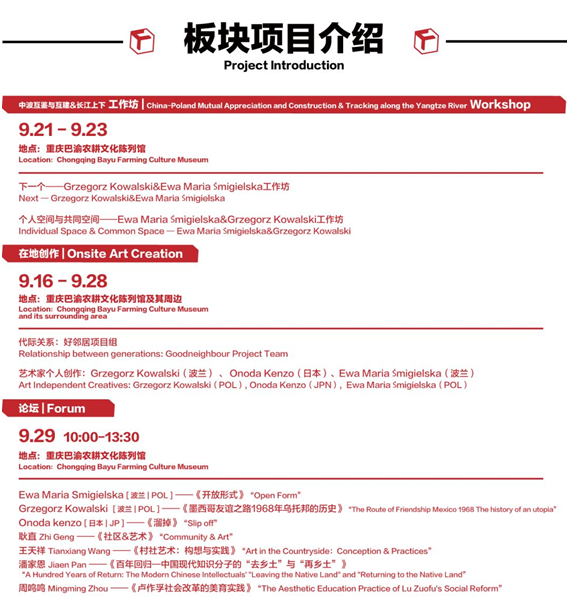

下一个 - Grzegorz Kowalski工作坊
Next - Grzegorz Kowalski Workshop
公众参与:定向邀请式。
Public participation: Invitation only.
工作坊推介 | Workshop Introduction:
“开放形式”作为波兰华沙艺术学院奠基石意义的创作教学理论,在波兰艺术现代转型的历程中意义重大,由此在其学院后来生发出的九大分院和所有系科专业中都有着深刻的体现。年过七旬的Grzegorz Kowalski教授作为其最重要的理论与实践的传承人,将亲自利用重庆在地现场与工作营学院进行系统的创作与交流。Grzegorz Kowalski教授的工作坊无疑是大师班等级的难得机会。
The “Open Form", as the cornerstone creative teaching theory of the Warsaw School of Art in Poland, is of great significance in the modern transformation of Polish art. It has been deeply reflected in the nine branches and all departments of the college. Professor Grzegorz Kowalski, who is over 70 years old, as the inheritor of his most important theory and practice, will create and communicate systematically in person using the locality and workshop of Chongqing. Professor Grzegorz Kowalski's workshop is going to be undoubtedly a world-class communication opportunity .
导师介绍 | Tutor Introduction:
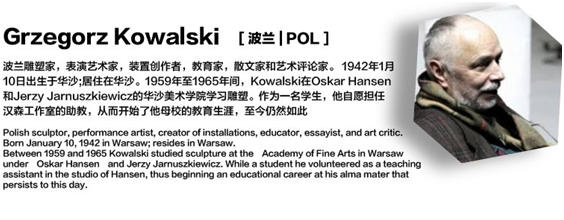
个人空间与共同空间 - Ewa Maria Śmigielska工作坊
Individual Space & Common Space - Ewa Maria Śmigielska Workshop
公众参与:定向邀请式。
Public participation: Invitation only.
工作坊推介 | Workshop Introduction:
波兰艺术教育非常重视学术与社会的全面有机结合,Ewa教授作为一名以雕塑出发的艺术家,全面活跃于社会的各种领域,以社会作为开放的剧场与空间,从事着无边际的空间表达,即是波兰艺术生态的生动体现。本次工作坊Ewa教授将以在地作为完整社会的材料综合体来理解,同时将以其中分接为材料,并将最终的创作实施并融汇于在地本身。
Polish art education attaches great importance to the comprehensive and organic combination of scholarship and society. As a sculpture-based artist, Professor Ewa is fully active in various fields of society, with society as an open theater and space, engaged in infinite spatial expression. It is a vivid embodiment of the Polish art ecology. In this workshop, Professor Ewa will understand the locality as an integral social material to implement and integrate into the final creation.
导师介绍 | Tutor Introduction:
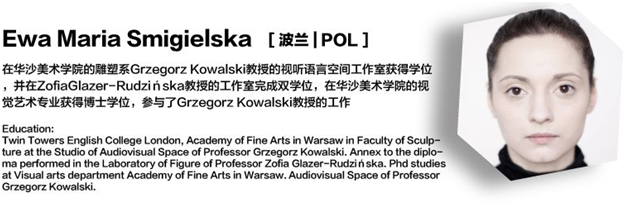

代际关系:好邻居艺术项目组
Relationship between generations: Good Neighbors Project
公众参与:艺术家完成在地创作后,将推出在地成果展,敬请期待。
Public participation: After the artist completes the onsite art creation, we'll hold an exhibition, please stay tuned.
在此,“邻居”超越“住在隔壁的人”的传统概念,来到了更加宽泛的讨论语境中:关于人类之间归属、变迁的问题,或是关于人类与周遭环境、资源、权利、共存的问题。简而言之,“邻居”是一切关系和联系的总和概括,“好”,则是对于共生的期许。
“好邻居”艺术项目,缘起于川美跨媒体工作室的展览实践。在美院,学生已经麻木于白盒子空间内的自娱自乐后,我们将展览空间搬进了川美新校区的“好邻居”——外宿学生聚集区,同时也是基于现代化扩张而开发的房地产社区里。在最熟悉、最安逸,同时也是现代化设计体系里最规整的居民家中,让艺术介入日常的生活,反思着现代化以来邻里之间、社群之间、共同体之间关系出现的裂痕。一帮20岁的青年人,用活力与热情发声于这几十平米的空间,引来了周边居民的关注和参与。从此,这个年轻的血液传递了出去。
第二次“好邻居”,我们从重庆出发,顺着长江水,来到了长江的中端,重庆在长江经济带上的“好邻居”——武汉。在武汉建国以来最早的“蒋家墩”码头,一个被现代性发展所遗弃的边缘地带。这样一个十足的野地,我们遇上了来自湖北美术学院的年轻艺术群体,为一个从岸上赶到长江,又从长江赶岸上的个体人物感到忧心;为一艘船甚至整个码头的逝去感到悲戚;也为中国步入后工业时代、产业结构升级,所导出的工业凋敝的遗迹、社群结构崩裂、江湖人文的平息感到唏嘘。借由艺术,我们非常本能地为一艘沉船、一个承载历史的码头举办了一个葬礼,在野地,对外发声——野草破开泥石,一个社会事件已然产生。长江上下一同讨论着人与工业、人与江船、人与历史的关系。野生的漫流,连接着长江上下,悄然展开。
这一次我们回到中国乡土回归的腹地——重庆,西南乡建的起源——北碚。在这里,有处于新城与旧区之间的典型城乡结合部,灯塔老街。
在乡村再造与城市更新的历史诉求中,“好邻居”试图在原乡,弥合人与邻里、记忆、土地、归属的那不可见但却一直存在的关系。
Therefore, the “neighbor” transcend the traditional concept of “people living next door” and come to a broader context of discussion: questions about the attribution and change of human beings, or about humans and their surroundings, resources, rights, Coexistence issues. In short, "neighbor" is the total sum of all relationships and connections, and "good" is the expectation of symbiosis.
The “Goodneighbour” Project originated from the exhibition practices of the Cross-media Studio of Sichuan Fine Arts Institute.
Students of Sichuan Fine Arts Institute have grown out of the classroom spaces and extend the exhibition space into the “good neighbors” area– the student living and gathering area of modern community. In the most familiar, most comfortable, and at the same time, the most common resident community of the modern design system, they use art to intervene daily life, reflecting on the rift between the neighborhoods, between communities and the surrounding environments . A group of young people around 20-year-old, with their vitality and enthusiasm, attract the attention and participation of the surrounding residents to the activities took place in the ten-square-meter space. Since then, this young blood has passed on.
The second "good neighbor project", we started from Chongqing downwards along the Long River, came to the middle point, where Chongqing's "good neighbor" in the Yangtze River economic belt – Wuhan is located. "Jiangjiadun", the earliest dock since the founding of China, was abandoned in modern development as a marginal zone. A young art group from the Hubei Academy of Fine Arts, worried about an individual who arrived from somewhere and was about to leave the Yangtze River. We feel sorry for the departure of a ship and the withering of the entire dock. We are also astonished by the relics of industrial degeneration, the collapse of social structures and the indifference of culture as China advanced into post-industrial and the upgrading of industrial structure era. Through art, we instinctively hosted a funeral for a shipwreck, a dock that carries history, and uttered a voice in the wilderness—the weeds broke through the mud, and a social event has already taken place. The Long River Project deal with the relationship between people and industry, people and rivers, people and history. The wild flow is connected from the upper to the lower reaches of the Yangtze River and marches on.
This time we return to the hinterland of Chinese rural area –Beibei of Chongqing, the origin of Southwest Rural Construction. We can find typical urban-rural junction area between the new and old town and on the Dengta Street, the free marketing place where thousands trade was made, the old market of daily life support in Caijia, the resettlement community moved from an old village…
In the historical appeal of rural reconstruction and urban renewal, “good neighbor” tried to bridge the invisible yet always existing relationship between people and neighbors, memories, land, and senses of belonging.
参与艺术家 | Artists:
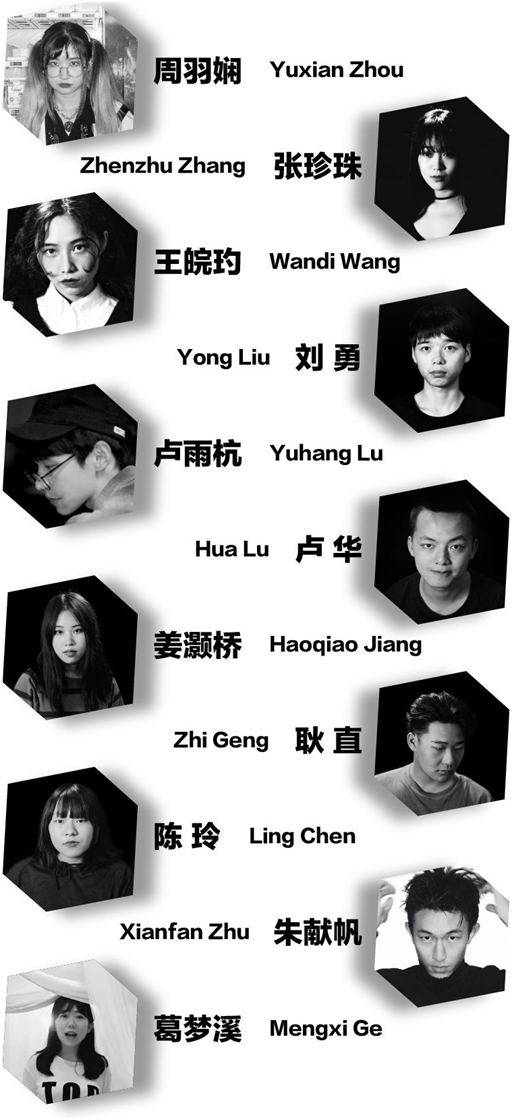
艺术家个人创作:
Art Independent Creatives:
公众参与:艺术家完成在地创作后,将推出在地成果展,敬请期待。
Public participation: After the artisit completes the onsite art creation, we'll hold an exhibition, please stay tuned.
参与艺术家 | :
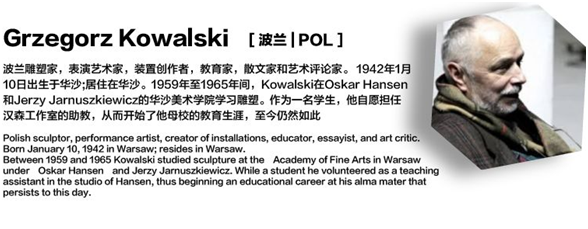
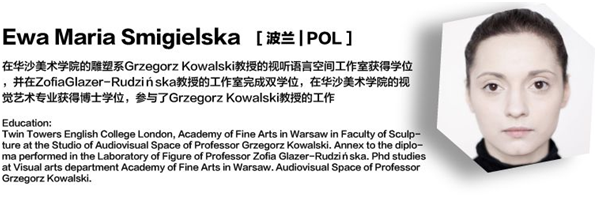
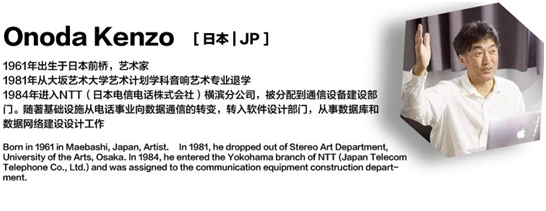
“历史的定命” - 从世界迁移到世界定居的“复归”
Fate of History - “Returning” from Global Migration to Global Settlement
公众参与:不限额公开参与。
Public participation: No limit public participation.
主持 Host:曾途 Tu Zeng
演讲主题及嘉宾 | Presentation Theme&Guest:
Ewa Maria Smigielska -《开放形式》
Grzegorz Kowalski -《墨西哥友谊之路1968年乌托邦的历史》
Onoda Kenzo -《溜掉》
耿直 -《社区&艺术》
王天祥 -《村社艺术:构想与实践》
潘家恩 -《百年回归--中国现代知识分子的“去乡土”与“再乡土”》
周鸣鸣 -《卢作孚社会改革的美育实践》
Ewa Maria Smigielska - “Open Form”
Grzegorz Kowalski - “The Route of Friendship Mexico 1968 The History of an Utopia”
Onoda kenzo - “Slip Off”
Kenji - “Community & Art”
Tianxiang Wang - “Art in the Countryside:Conception & Practices”
Jiaen Pan - “A Hundred Years of Return: The Modern Chinese Intellectuals' "Leaving the Native Land" and "Returning to the Native Land”
Mingming Zhou - “The Aesthetic Education Practice of Lu Zuofu's Social Reform”
论坛嘉宾介绍 | Forum Guests:
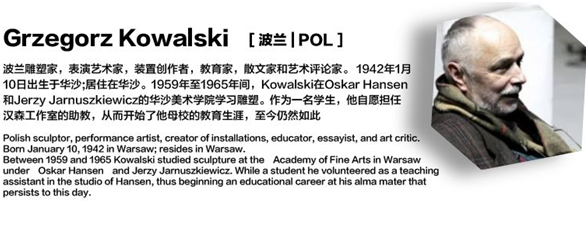
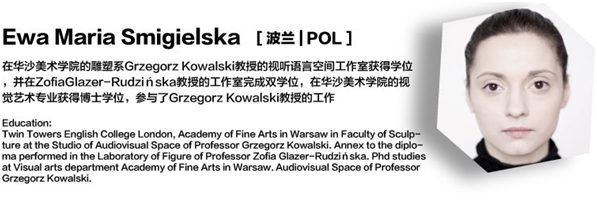
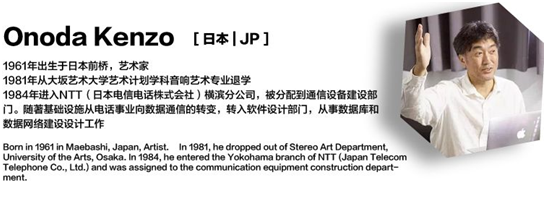
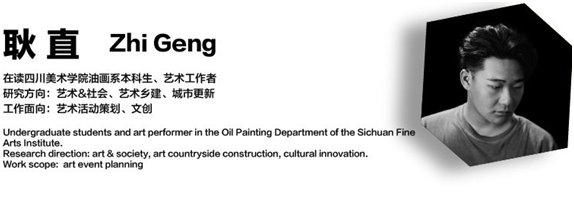
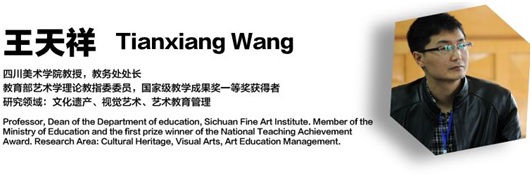
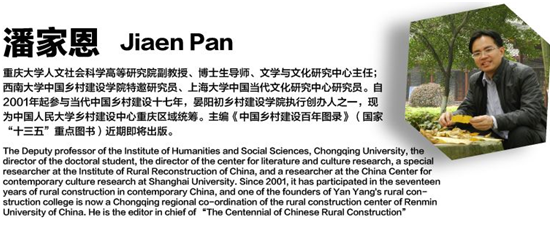
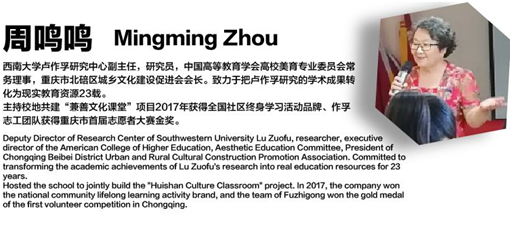
【免责声明】上游新闻客户端未标有“来源:上游新闻-重庆晨报”或“上游新闻LOGO、水印的文字、图片、音频视频等稿件均为转载稿。如转载稿涉及版权等问题,请与上游新闻联系。

